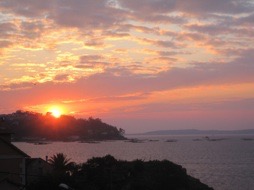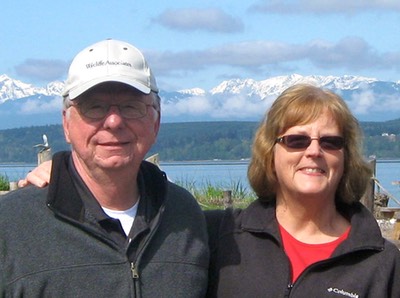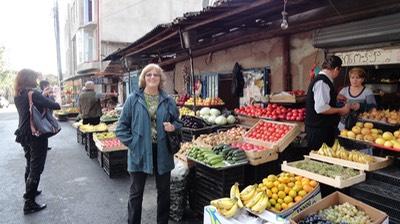April 14, 2010
Located in the northwestern part of Spain, north of Portugal, in the area known as Galicia, is the city of Santiago de Compostela. Santiago means “Saint James” who was the “son of Zebadee” and one of the twelve Apostles. Tradition tells us that Saint James preached the Gospel in Spain and returned to Jerusalem. There he was killed by King Herold Agrippa according to the Bible, Acts 12. His remains were transported, according to legend, to Galica where his tomb was found in the eighth century just in time to make him the patron saint of Spain and lead the Spanish armies in the reconquest of Spain by booting out the Moors [it took 700 years until 1492]. Of course it was not called Spain then but you get the idea.
Having the tomb of Saint James resulted in the erection of a grand cathedral, shown in the photo above, and during the middle ages and to the present day thousands of pilgrims walk long distances to his tomb. Modernly it is probably just good exercise for most people but to some it may hold a spiritual meaning as well.
Unfortunately one of the special parts of the cathedral, the Portico of Glory, was under restoration when we visited. The Spanish are investing many Euros in the restoration of historic sites. This entry to the cathedral is the work of sculptors around 1160 lead by Master Mateo.
Old Santiago is a mixture of narrow lanes with many cafes, bars and trinket stores. So the next day we headed out to the rocky NW Spain coastline the “Finisterre” the End of the Earth. It is not actually the farthest west point in Iberia but close enough. We enjoyed the rocky coast, the wonderful wildflowers [see our Photo Album] and the stone structures including 12th century churches, Celtic crosses and stone huts on stone stilts acting as corn cribs but looking something like a cache in Alaska.
Mass celebrated in Santiago Cathedral 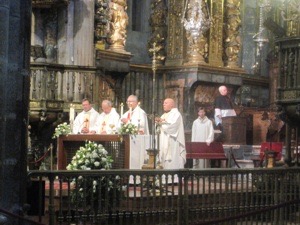
Tapestries [patterns were painted by Francisco Goya]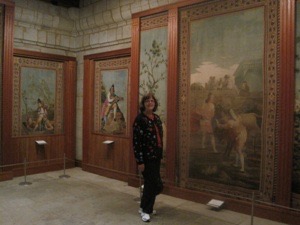
Restored Choir Seats sculpted by Master Mateo ca 1170 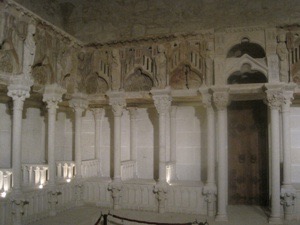
A modern coffee break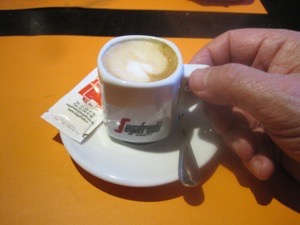
Celtic Cross and 12th Century Church
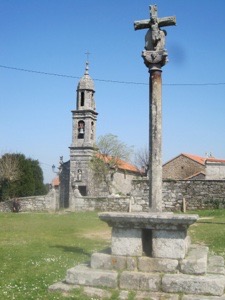
Stone ‘corn crib’
Coast of Galica 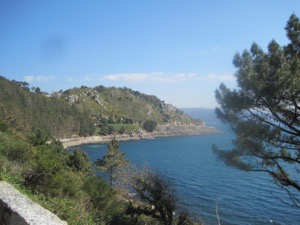
Sunset over Rias Bajas [Lower Inlets] of Galicia